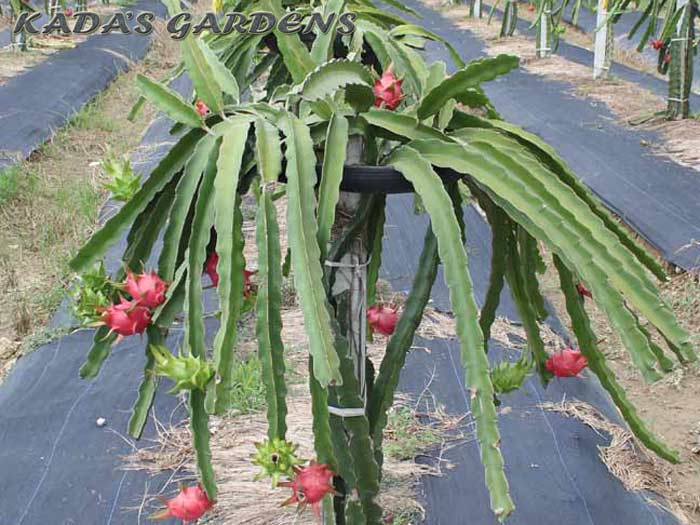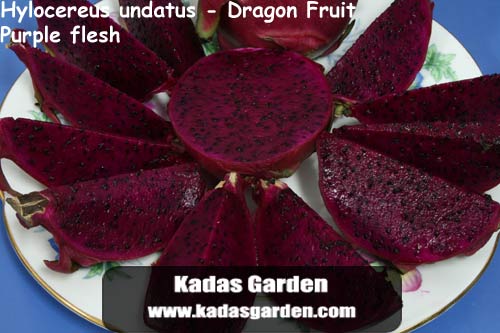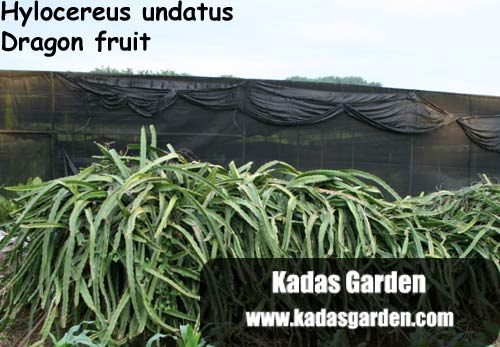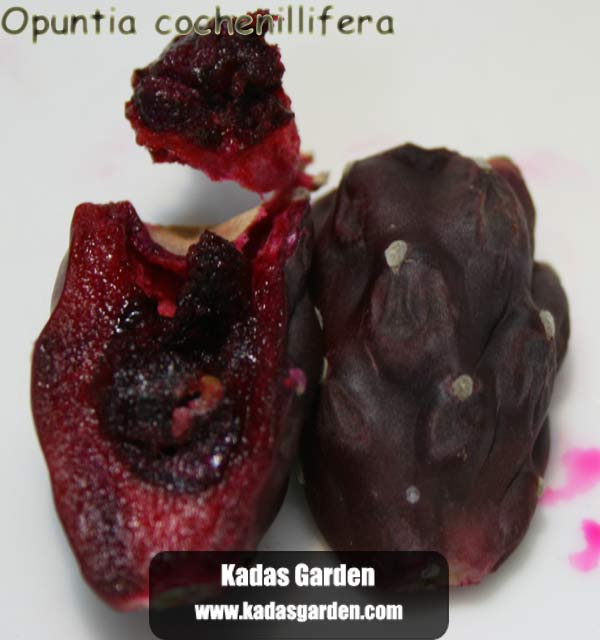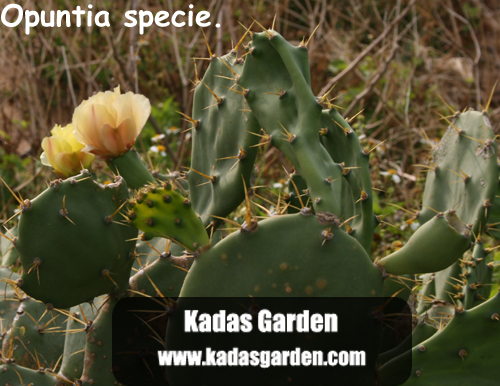|
Fruit Appearance: Globular, slightly oval shaped with a soft "peel" which can be peeled off fairly easily. Peel thickness is usually 3-8mm thick, with the rest of the inner area fleshy fruit. The entire fruit is edible, however usually the peel is not eaten because it is not as soft or as sweet as the inner flesh. One could, theoretically, make some interesting meals using it in cooking as a vegetable substitute. Inner flesh is usually white or red, with many shades inbetween. Also different hybrids with different coloured fruits ranging from dark purple to white. Many small seeds inside flesh, which are small and slightly crunchy (not harming ones teeth at all).
Fruit sizes: Some hybrids have smaller fruits as small as 5cm diameter, while larger cultivated varieties can reach 20cm or more in length.
Fruit weights (fresh): They range a lot between varieties/hybrids and environmental conditions, but in general are 300-500 grams per fruit.
Fruit texture: Soft, almost kiwi like (kiwi seeds and dragon fruit seeds are also sort of similar is texture). Fruit can be cut or diced in any way, and also goes well in drinks (blended).
Fruit storage: Stores quite well and commercial producers are able to ship worldwide relatively trouble free. The only real disadvantage with dragon fruit is their soft nature and transport, but this is quite easily avoided with foam padding.
Fruit production efficiency: Dragon fruit does nto produce huge amounts of fruit. Each branch, generally around a meter in length, seems to produce no more than 4 fruits (averages 2 that we see). There are varieties that produce more or less.
Grafting Varieties and Hybrids: In the cactus growing industry (ornamental cacti) Hylocereus sp. are used extensively for grafting slower growing and rare cacti (to improve growth speed). There are a few hybrids/varieties that are grown specifically for this purpose, most of these are not bred to be big fruit producers and will often yield low fruit quantity an/or quality. It is important to choose a variety/hybrid that is aimed at fruit production, and not grafting.
Other worthwhile Species: Hylocereus costaricensis, H. megalanthus, H. monacanthus.
Environmental Requirements: Hylocereus does not tolerate cold temperatures (being tropical vine cacti), so warmer regions would be required. Areas like the warmest areas of USA (California, Florida and Hawaii for example), SE Asia, Australia, Africa, middle east (India, Isreal are already cultivating it), Native to Central America and Mexico and grows well in much of warmer South America.
|


